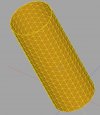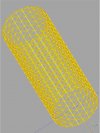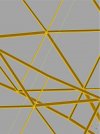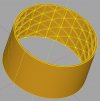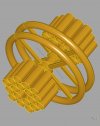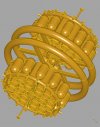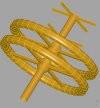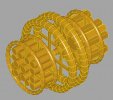Nobby-W
Not an axe murderer
- Joined
- Oct 7, 2018
- Messages
- 7,070
- Reaction score
- 16,007
My adventures with 3D modelling, part 1.
So, I spent a frustratingly large amount of time in attempts to troubleshoot Blender's array modifier facility, but eventually figured out how to array items around a central axis. As such, my attempts over the past couple of days to teach myself how to use it by drawing a space station are showing a small modicum of progress. It's still a bunch of primitives without any greebling or textures, but it's a start.
I decided to start with Blender because it's (a) free, (b) widely used and (c) by all accounts a fairly capable system. It used to get a lot of shade over its gnarly UX but not for its lack of capability with the exception of (from what I can tell) Maya snobs. One of the strikes against Sketchup was its dependence on third-party plugins for functionality. For example, it doesn't really have a proper subdivision operator out of the box. It might have been alright but I didn't fancy juggling a plugin-fest on something I was trying to learn.
A little bit of background
I've decided to embark on doing some intrinsically 3-dimensional items in 3D in order to lubricate the design process. When I can get stuff down on paper or at least into a file then this process engages bits of my brain that would otherwise lie idle, and improves the quality of the creative work and ability to delve into detail. You can see some work on a city and starport town in another of the postings on this forum.
The first 3D project is Freeside Station, a sort of free city in space whose original owners were dissolved by historical events and replaced by the current ruling factions. This is, as one might expect, a wretched hive of scum and villainy in which our intrepid PCs will find themselves right at home. It has the usual suspects for such a location - NPCs, encounters, politics and factions, interesting locations and so forth. It's one of a few 'home ports' I'm doing for the setting, which are designed to be bases of operations for characters, with domestic politics to make things interesting.
My learnings so far
This is what I came up with after a few hours tinkering and a lot more time googling around in an attempt to figure out how to get the spurious transformations out of my arrays. It's nowhere close to finished art, but it is a first step.

So, I spent a frustratingly large amount of time in attempts to troubleshoot Blender's array modifier facility, but eventually figured out how to array items around a central axis. As such, my attempts over the past couple of days to teach myself how to use it by drawing a space station are showing a small modicum of progress. It's still a bunch of primitives without any greebling or textures, but it's a start.
I decided to start with Blender because it's (a) free, (b) widely used and (c) by all accounts a fairly capable system. It used to get a lot of shade over its gnarly UX but not for its lack of capability with the exception of (from what I can tell) Maya snobs. One of the strikes against Sketchup was its dependence on third-party plugins for functionality. For example, it doesn't really have a proper subdivision operator out of the box. It might have been alright but I didn't fancy juggling a plugin-fest on something I was trying to learn.
A little bit of background
I've decided to embark on doing some intrinsically 3-dimensional items in 3D in order to lubricate the design process. When I can get stuff down on paper or at least into a file then this process engages bits of my brain that would otherwise lie idle, and improves the quality of the creative work and ability to delve into detail. You can see some work on a city and starport town in another of the postings on this forum.
The first 3D project is Freeside Station, a sort of free city in space whose original owners were dissolved by historical events and replaced by the current ruling factions. This is, as one might expect, a wretched hive of scum and villainy in which our intrepid PCs will find themselves right at home. It has the usual suspects for such a location - NPCs, encounters, politics and factions, interesting locations and so forth. It's one of a few 'home ports' I'm doing for the setting, which are designed to be bases of operations for characters, with domestic politics to make things interesting.
My learnings so far
- I've spent more time trying to troubleshoot why the array function was applying spurious transforms to the clones it was producing. I think I've got that figured out now. The original objects I was cloning in the array had transforms in their definitions without being applied to the object itself to create a definition of a transformed object rather than a primitive object with a transformation. This means that the array was re-applying the transformation to each clone, producing very strange results. Most of yesterday and today (including some bits of today when I should have been doing other things) was spent trying to figure out how to stop it from doing this.
- The drawing isn't to scale, although I'll do another one that is once I've figured out how to do stuff on this.
- It took a bit of frigging to get lathing to work for the rings, but it did eventually work.
- Learning how to use the 3D cursor is a key skill.
- Empty objects are quite useful
- It's still running OK on my T430 with built-in graphics. I think the capabilities of the Intel mobo chipsets are somewhat underrated.
This is what I came up with after a few hours tinkering and a lot more time googling around in an attempt to figure out how to get the spurious transformations out of my arrays. It's nowhere close to finished art, but it is a first step.

Last edited:



